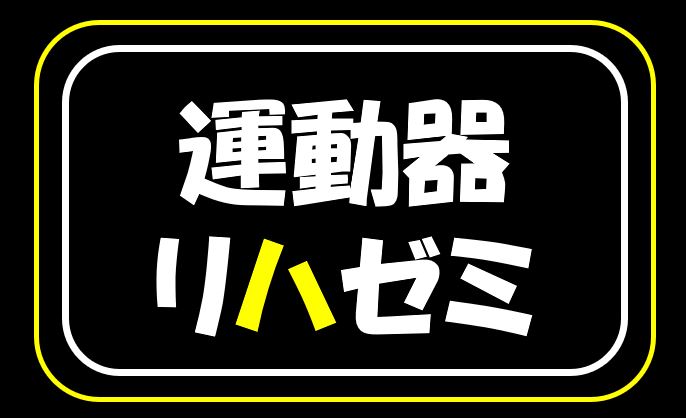こんにちは!
運動器専門のリハビリスタッフです!!
いつもお世話になります。
今回は、『ランナー膝(腸脛靭帯炎)は保存療法と手術のどちらが成績良好か?』
について解説させていただきます。
ランナー膝(腸脛靭帯炎)は腸脛靭帯:Iliotibial band (ITB)に対するオーバーユース(過用)であるとされています。
腸脛靭帯:Iliotibial band (ITB)は大腿外側組織である大殿筋、中殿筋、大腿筋膜張筋、外側広筋の筋膜が合流し、分厚くなった組織です。
腸脛靭帯は大殿筋、大腿筋膜張筋から起始し、膝に近い脛骨前外側部の隆起であるGerdy結節に停止します。

ランナー膝(腸脛靭帯炎)は主にランニングによる膝関節周辺傷害のひとつです。
膝関節の屈伸を繰り返すことで、腸脛靭帯が大腿骨外顆と接触し摩擦を生じることで滑膜炎(炎症)を起こし、疼痛が発生するとされています。
海外では腸脛靭帯症候群Iliotibial band syndrome (ITBS)と表現されることが多いようです。
競技としてはマラソンやバスケットボール、自転車競技等のアスリートに発生しやすいです。
大腿骨外顆での圧痛やgrasping test(大腿骨外顆部で腸脛靭帯を圧迫し膝を90°屈曲位から伸展させる)、Ober testで疼痛が誘発されることが多いです。
『Oberテスト変法の方法と有用性』https://undoukirehazemi.com/%e3%80%8eobel%e3%83%86%e3%82%b9%e3%83%88%e5%a4%89%e6%b3%95%e3%81%ae%e6%96%b9%e6%b3%95%e3%81%a8%e6%9c%89%e7%94%a8%e6%80%a7%e3%80%8f/
外因性の要因としては、走行距離や頻度の急激な増加、踵の外側が摩耗した靴の使用などが報告されています
内因性の要因としては、内反膝、回外足、大腿筋膜張筋の短縮や中殿筋筋力不足などが報告されています。
そんな中、2020年に、ランナー膝(腸脛靭帯炎)に対して保存療法か手術のどちらが成績良好かを検証した論文が海外で報告されております。
この論文の検証結果が気になるところです。
◆論文紹介
Review
Arthrosc Sports Med Rehabil (Report missing IFs)
. 2020 Jun 10;2(4):e399-e415.
doi: 10.1016/j.asmr.2020.04.001. eCollection 2020 Aug.
Operative Versus Nonoperative Management of Distal Iliotibial Band Syndrome-Where Do We Stand? A Systematic Review
遠位腸脛靱帯症候群の手術と非手術の比較-私たちはどこに立っているのか? システマティックレビュー
Ioanna K Bolia 1, Preston Gammons 2, Donald Jay Scholten 2, Alexander E Weber 1, Brian R Waterman 2
Affiliations expand
- PMID: 32875305 PMCID: PMC7451906 DOI: 10.1016/j.asmr.2020.04.001
Abstract
Purpose: To systematically review the operative versus nonoperative methods for management of iliotibial band syndrome (ITBS) with comparison of the respective clinical outcomes.
概要
目的:腸脛靱帯症候群(ITBS)の管理について、手術と非手術の方法を系統的に検討し、それぞれの臨床転帰を比較すること。
Methods: By adhering to the Preferred Reporting Items for Systematic Reviews and Meta-analysis guidelines, 3 databases (Medline, Scopus, Web of Science) searched from inception to October 2019 for randomized clinical trials (RCTs) and observational studies on humans that reported the outcomes following operative or nonoperative management of ITBS. Excluded were case reports, case series with <5 participants, review articles, non-English articles, and non-peer-reviewed articles. The Methodological Index for Non-Randomized Studies (MINORS) criteria for observational studies and the Cochrane Risk of Bias Tool for RCTs were used for quality control.
方法 Preferred Reporting Items for Systematic Reviews and Meta-analysisガイドラインを遵守し、3つのデータベース(Medline、Scopus、Web of Science)で、ITBSの手術または非手術管理後の転帰を報告したヒトに関する無作為臨床試験(RCT)および観察的研究を開始時から2019年10月まで検索した。除外したのは、症例報告、参加者5人未満のケースシリーズ、レビュー論文、英語以外の論文、査読のない論文である。観察研究ではMethodological Index for Non-Randomized Studies(MINORS)基準、RCTではCochrane Risk of Bias Toolを使用し、品質管理を行った。
Results: There were 15 eligible studies (9 for operative,6 for nonoperative treatment) examining 179 athletes (mean age 27.3 years, range: 17-53) who received conservative therapy for ITBS and 200 athletes (mean age 30.1 years, range: 14-63) who underwent surgical treatment. Most athletes were runners (65%). The mean follow-up time was significantly longer in studies reporting the outcomes following operative compared with nonoperative ITBS treatment (33.5 vs 2 months, respectively, P < .05). Significant variability in the methods used to assess the clinical outcomes precluded meta-analysis. The most commonly reported (7/9 studies, 77.7%) variable for postoperative evaluation in athletes was the return to sport rate (range: 81%-100%). Significant reduction in pain was consistently (6/6 studies,100%) found among the studies reporting the results of conservative ITBS treatment. The included RCTs were of good (1/5, 20%), fair (2/5, 40%), or poor (2/5, 40%) quality, whereas the average MINORS score was 7.4 (range: 3-13) for observational studies. The level of evidence ranged from Level II (6/15 studies) to IV (9/15 studies).
結果 ITBSの保存療法を受けた179人のアスリート(平均年齢27.3歳、範囲:17~53)と外科的治療を受けた200人のアスリート(平均年齢30.1歳、範囲:14~63)を調べた15件の適格研究(手術療法9件、非術式治療6件)であった。ほとんどのアスリートはランナーであった(65%)。ITBSの手術後の治療結果を報告した研究では、手術以外の治療と比較して、平均追跡期間が有意に長かった(それぞれ33.5ヵ月 vs 2ヵ月、P < 0.05)。臨床転帰を評価するために使用された方法には大きなばらつきがあったため、メタ解析は不可能であった。スポーツ選手における術後評価の変数として最もよく報告された(7/9研究、77.7%)のは、スポーツ復帰率(範囲:81%~100%)であった。ITBSの保存的治療の結果を報告した研究の中で、疼痛の有意な軽減は一貫して(6/6研究、100%)認められた。含まれるRCTは、質が良い(1/5、20%)、まあまあ(2/5、40%)、悪い(2/5、40%)であったが、観察研究の平均MINORSスコアは7.4(範囲:3-13)であった。エビデンスレベルは、レベルII(6/15試験)からIV(9/15試験)であった。
◆論文の結論
Conclusions: Based on the current literature and at a maximum follow-up time of 6 months, conservative therapy can effectively reduce ITBS symptoms in athletes. Multiple surgical options exist for athletes who do not respond to nonoperative measures, with a reported return to sport rate between 81% and 100%.
結論 現在の文献に基づくと、最大6ヵ月の追跡期間において、保存療法はアスリートにおけるITBSの症状を効果的に軽減することができる。非手術療法に反応しないアスリートには複数の手術オプションが存在し、スポーツ復帰率は81%~100%であると報告されている。
◆まとめ
上記論文では腸脛靱帯症候群(ランナー膝)に対して手術または保存療法での治療成績を比較するため、世界中の様々な論文から検証しております。
15の研究から、腸脛靱帯症候群(ランナー膝)のアスリートを、保存療法179人(平均年齢27.3歳、範囲:17~53)と手術を行った200人(平均年齢30.1歳、範囲:14~63)に分けて治療成績を調査しております。対象者の65%がランナーであったそうです。
結果として平均追跡期間は手術の方が有意に長くなるようで、手術群が33.5カ月、保存療法群が2カ月とかなりの差があります。
手術後のスポーツ復帰率に関しては81~100%と高いようです。
腸脛靱帯症候群(ランナー膝)の保存療法は一貫して有意な軽減を認めたようです。
上記論文の結果を踏まえると、腸脛靱帯症候群(ランナー膝)に対して保存療法は痛みを軽減することができ、約2か月で治療を完了することが多いようです。
手術療法は平均観察期間が33カ月と約3年にもなりますが、スポーツ復帰率は81%~100%と高いようです。
以上のことから、保存療法で改善が乏しい場合には手術療法を選択しても良いのではないかと思われます。
今回は、『ランナー膝(腸脛靭帯炎)は保存療法と手術のどちらが成績良好か?』
について解説させていただきました。



